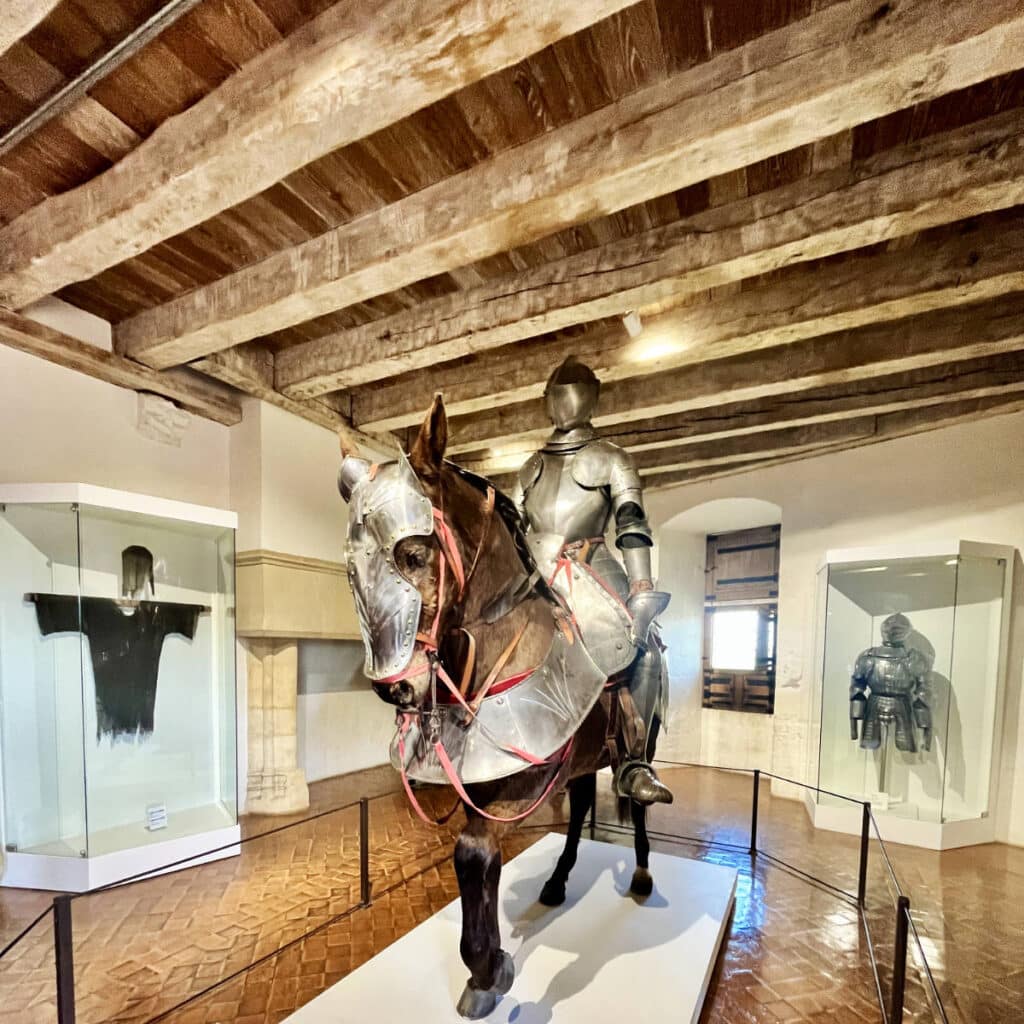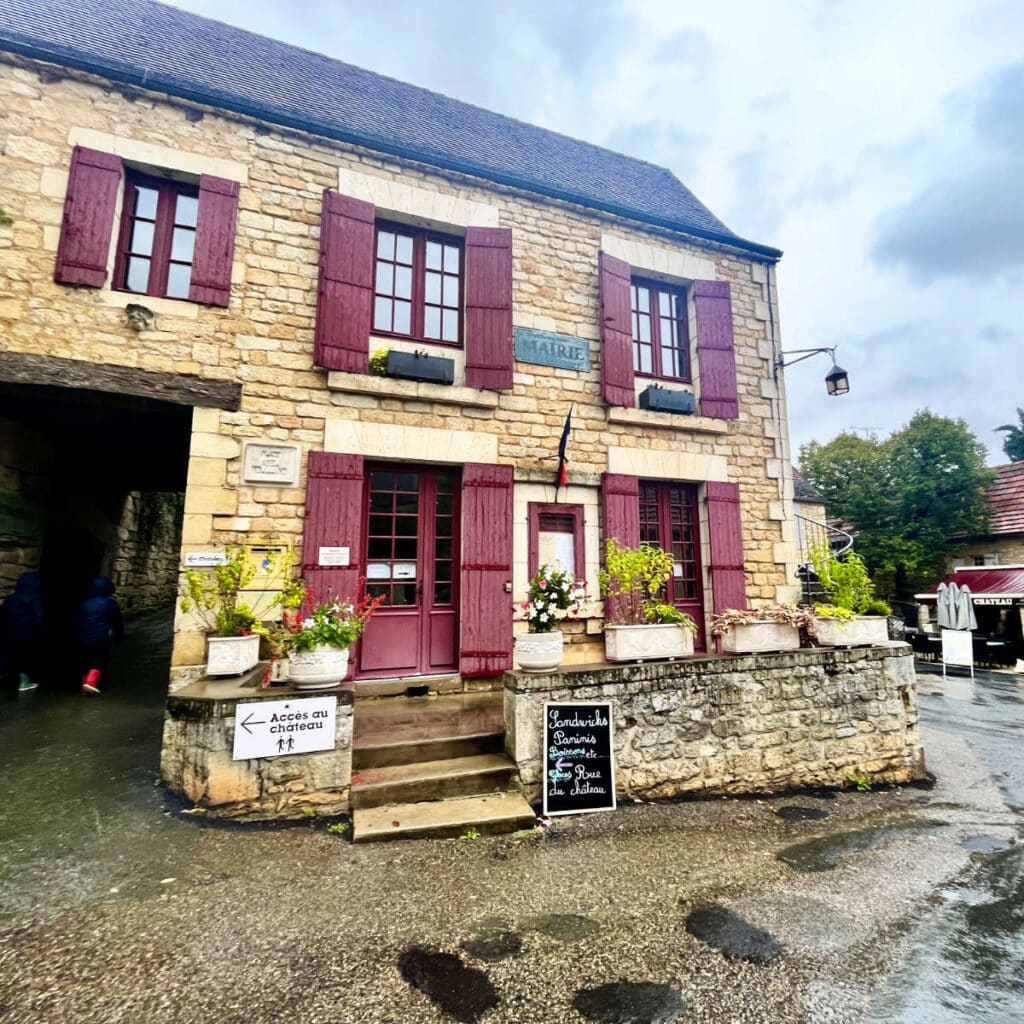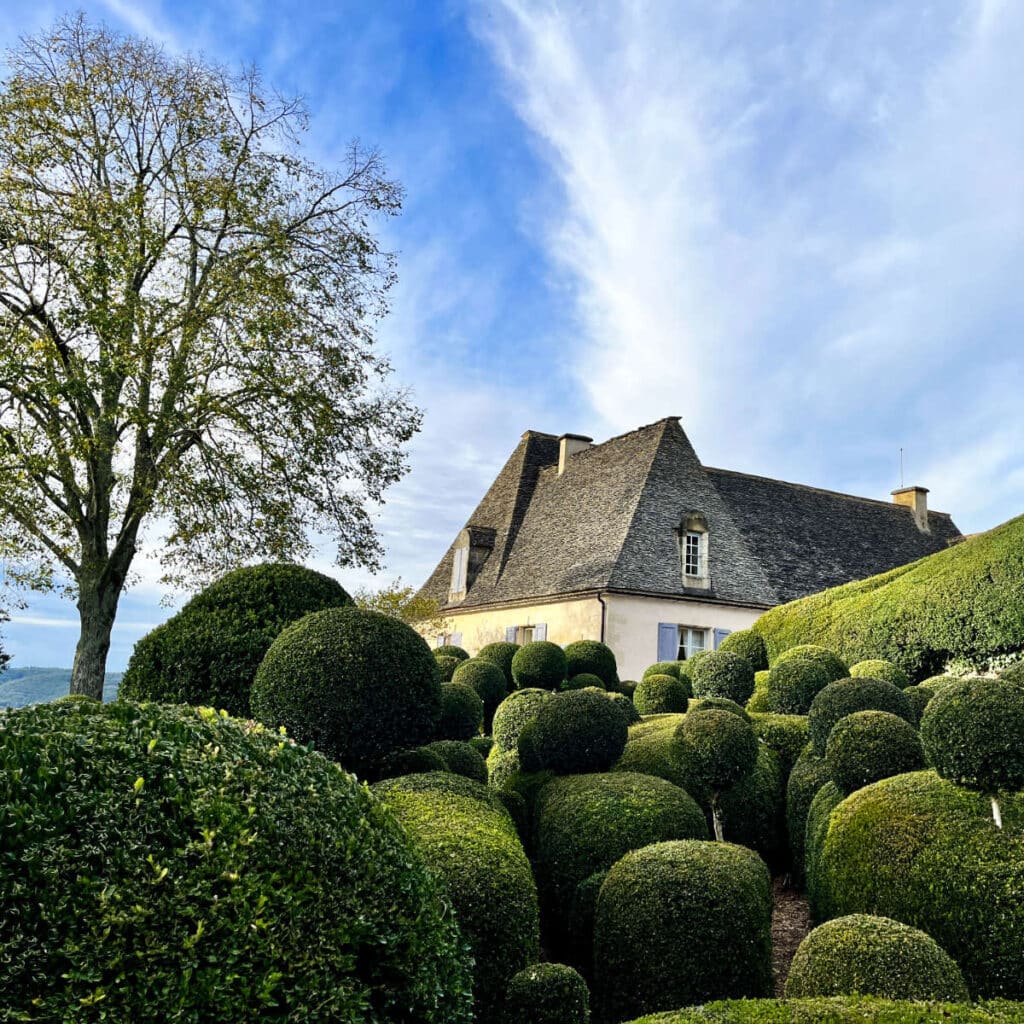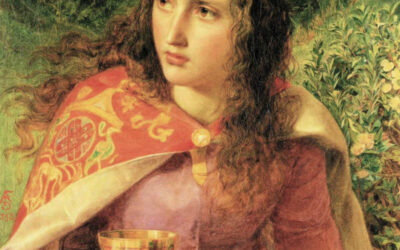Tucked away in southwestern France, Castelnaud-la-Chapelle is that kind of hidden gem you stumble upon and that you didn’t know you wanted to visit.
Known as one of the “plus beaux village of France” (“most beautiful villages in France”), it is located along the meandering Dordogne River. Indeed, this a scenic village that is a bit like a living postcard.

Its charming stone buildings and laid back locals just perculate with a vibe that’s all about taking life at an unhurried pace. But the main reason Castelnaud-la-Chapelle is famous has to the showstopper of a château.
This medieval fortress stands tall on a limestone cliff with its medieval trebauchet still at the ready. Because this was one of the forefronts of the Hundred Years’ war , changing hands several times like a strategic chess piece.
The castle isn’t just bricks and stones; it is a place that still holds animations, exhibitions and medieval festivals, trying to show visitors echos of the past when knights roamed the countryside.
So let’s have a look at what there is to see and do in Castelnaud-la-Chapelle, shall we? Allons-y!
History
The history of Castelnaud-la-Chapelle and its château can be traced back to the 13th century. Castelnaud name means “new castle” in the Occitan language, a local regional language that was once widely spoken here.
The original fortress that was built here was seized in 1214 by Simon de Montfort (Count of Leicester), who led the Albigean crusade against the Cathars. The fortress burnt down during the fighting and a new castle was built in its place.
One of the most fascinating chapters in the town’s history unfolded during the Hundred Years’ War between the French and the English. This was the frontier of the lands of Duchess Eleanor of Aquitaine.

When Eleanor married the King of England, her lands went with her, eventually inherited by her descendants, including her son King Richard the Lionheart.
The former castle of King Richard, Château de Beynac, is only 3 miles away from Château de Castenaud. As such, the surrounding area was conquered and reconquered several times during the Hundred Years’ war as successive English and French Kings fought for control.
At different points during the war, the Château de Castelnaud was held by both the French and the English, each side leaving its imprint on the structure. The imposing fortifications and the well-preserved medieval walls transport visitors back to an era of knights and political intrigue.
In 1442, French King Charles VII, ordered the siege of the castle then held by the allies of the King of England. After three weeks of seige, Castelnaud-la-Chapelle surrendered in exchange for 400 crowns of gold to finally bring it under French control. The Hundred Years’ War ended eleven years later.
Things to do in Castelnaud-la-Chapelle
1. Chateau de Castelnaud
Château de Castelnaud is famous as one of the most well-preserved medieval castles in the Perigord Noir area in Dordogne. But more than being well-preserved, the château is famous for trying to bring those medieval times to life.

The castle has several exhibitions, including several workshops showing ironworks and weaponry. Depending on the season, visitors of all ages can partake in hands-on activities, from trying their hand at archery to dressing up in costume.
There is an extensive collection of medieval weaponry, armor, and costumes providing a vivid depiction of the strategic importance of the castle during the tumultuous Hundred Years’ War.
Opposite the chateau’s inside walls, you will notice a giant trebeuchet along with other weapons. These weapons have exceptionally been recreated as life-size working models of siege engines from the Middle Ages.
The castle is quite popular in the summer time, so book your tickets online to be sure to have a spot. You can read more about Château de Castelnaud here.
2. Village center
The village center of Castelnaud-la-Chapelle lies just outside the castle walls. As you exit the castle, you can walk down the narrow streets down towards the river Dordogne.

There are the typical cafés and restaurants, as well as plenty of souvenir shops if you want to take home a wooden sword (or two).
Note, if you do decide to walk down to the village from the château, keep in mind that you will have to walk back up as well, to get your car! Alternatively, you can move your car to one of the many parking lots that are closer to the town center.
3. Château de Milandes
About 2 miles (4km) outside of Castelnaud-la-Chapelle is the Château de Milandes. This 15th century castle resembles many others in the area, except for one thing: Josephine Baker.

The château was once the home of Baker, an famed American singer who became a French resistance fighter during World War II.
Her remarkable life is showcased in the château, from her costumes during performances to the work she did during the war. Baker was inducted into the Pantheon in Paris in 2021 and remains one of the most famous women in France.
4. The Marqueyssac gardens
About 3 miles (5km) away from Castelnaud-la-Chapelle is the Jardin du Marqueyssac. The Marqueyssac Gardens are famous for their meticulously designed topiaries in geometrical rounds and ovals, carefully trimmed to an inch.

The topiaries are juxtaposed with a wild forest like area, amelding horticulture and nature is quite the symphony.
In addition to the topiaries and the belvedere, Marqueyssac Gardens boast a wealth of nooks and crannies to explore. The garden paths wind through a variety of landscapes from small water features to treehouses, and playgrounds to woodlands.
It is a favorite with kids and nature-lovers, and the gardens are quite packed on sunny days all year round. You can read more about the Marqueyssac gardens here.
5. Market days
Castelnaud-la-Chapelle holds an evening market on Mondays during the July and August tourist season. (If you are looking for a day-time market head over to Sarlat-la-Canéda which is only a few miles away.)
6. Boating on the Dordogne river
One of the most popular activities in the area is boating along the Dordogne river. The river is quite calm, and individual kayaks and canoes can be rented during good weather to go boating for an hour or two.

If you don’t feel like doing all the work, you can buy tickets on the large local gabere boats which carry tourists up and down the Dordogne
The Gabares used to transport goods along the Dordogne, especially Bordeaux wine from the vineyards which run along the length of the Dordogne.
7. Local specialties
The Périgord and Dordogne departments of Nouvelle Aquitaine around Castelnaud-la-Chapelle is famous for its truffles.

Over 8-9 tonnes of black truffle produced there every year. With an emphasis on freshness, terroir, and authenticity, they called black diamonds.
Other local specialties in this part of Nouvelle Aquitaine is foie gras which is made from goose liver. If you enjoy the delicacy, head to the town of Sarlat-la-Canéda which is just a few miles away in the first weekend of March when a celebration of foie gras is held.

How to get to Castelnaud-la-Chapelle?
Castelnaud-la-Chapelle is about 330 miles (535 km) from Paris and is about 125 miles (200 km) from Toulouse and Bordeaux. The only way to get to Castelnaud-la-Chapelle is by car or bus.
If you are driving down from Paris, the closest big city along the way is Limoges, which is about 95 miles (160km) away. If you don’t wish to drive, there are organized tours leaving from Sarlat-la-Canéda that will take you around the sights around the Dordogne river.
How easy is it getting around?
Castelnaud-la-Chapelle is relatively hilly so it is not as easy to get around in a wheelchair or stroller. It is not pedestrianized however, so you can get around the narrow streets by car (assuming your car is quite small and not an SUV!)
You will need a car to get from the Castelnaud village to the Château de Milandes which is about 4 miles away.
How many days should you spend?
About a day is enough in Castelnaud-la-Chapelle village center and visiting the castle, but you may want to stay longer to explore the surrounding countryside.
When is the best time to visit?
Castelnaud-la-Chapelle is a popular and lively town in the tourist season, with the Château’s animations attracting a lot of people. You may want make it your base as you explore the nearby towns of Sarlat-la-Canéda, Beynac-et-Cazenac, Rocamadour, Lascaux caves, Gouffre du Padirac, La Roque-Gageac, Domme, Carlux, etc.
In the last two weeks of April, the Château de Castelnaud takes part in the Château en Fête celebrations in the Dordogne, where several châteaux open their doors to visitors with various animations and medieval shows. It is a very popular festival and a must if you are interested in medieval life in France.
Where should you stay?
There are no hotels in Castelnaud-la-Chapelle, but there are a couple of great hotels in towns nearby (within 5 miles):
- €€€ – Les Chenes Rouges
- €€€ – La Tour de Cause
You can also choose to stay in a bigger town like Sarlat-la-Canéda:
- €€€ – Hôtel Montaigne
- €€€€ – Plaza Madeleine & Spa
- €€€€ – La Villa des Consuls

If you enjoyed that article, you may like to read more about traveling around Nouvelle Aquitaine. A bientôt!




